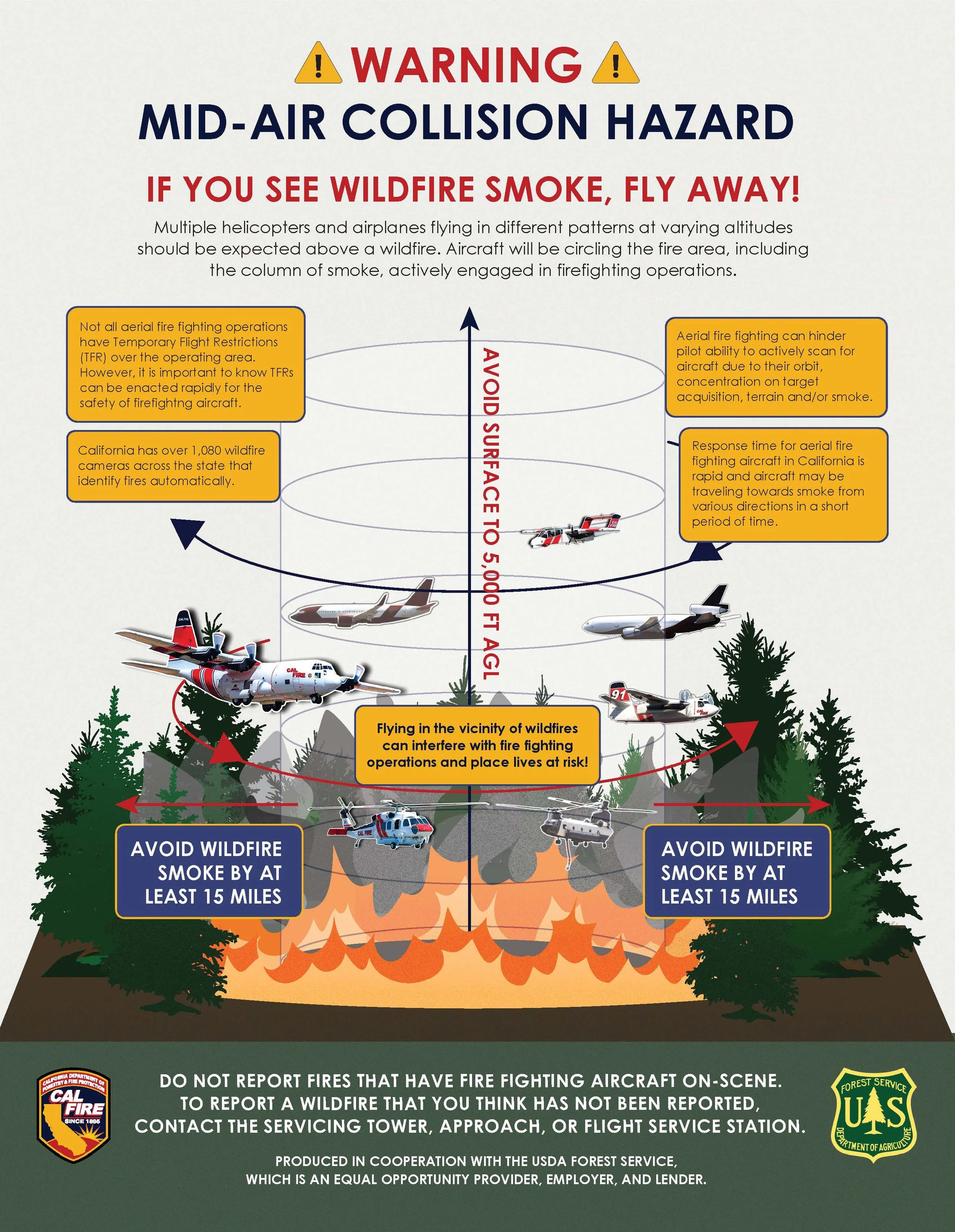Aerial Firefighting Safety
During a wildfire, aerial firefighting helicopters, tankers, and spotter aircraft are circling over the scene. These aircraft are working closely together on discreet frequencies to effectively contain and extinguish the flames. Aerial firefighters fly dangerous, high stakes missions to keep our cities and towns safe. As general aviation pilots we need to make room and allow for the firefighters to complete their missions and not add any additional undue hazards.
Typically the FAA will issue firefighting safety TFRs around a wildfire area that requires aerial firefighting operations. However, these TFRs can take several hours to be processed and published. While it is important to check for TFRs before every flight, new fires may not have a TFR around them yet. Also, the TFR is constructed to cover the aircraft orbit directly above the affected area, they do not account for firefighting aircraft arriving and departing from the area. For these reasons it is advised to remain at least 15 NM from any smoke columns up to 5000 ft AGL.
While flying a cross country it is advised to elect for some form of radar services such as flight following which will allow air traffic controllers to provide traffic alerts and suggested headings away from firefighting areas.
Aerial tankers and helicopters are frequently making low level passes around the fire, for that reason these rules apply to UAS operations as well. UAS present a tremendous hazard to firefighting aircraft, they are small, hard to see, and have no ADS-B out capabilities. This makes UAS virtually invisible to all aircraft in the area. impact with a UAS can easily bring down even a large aircraft, so it is required that UAS must stay out of TFRs and are advised to stay at least 15 NM away as well.

